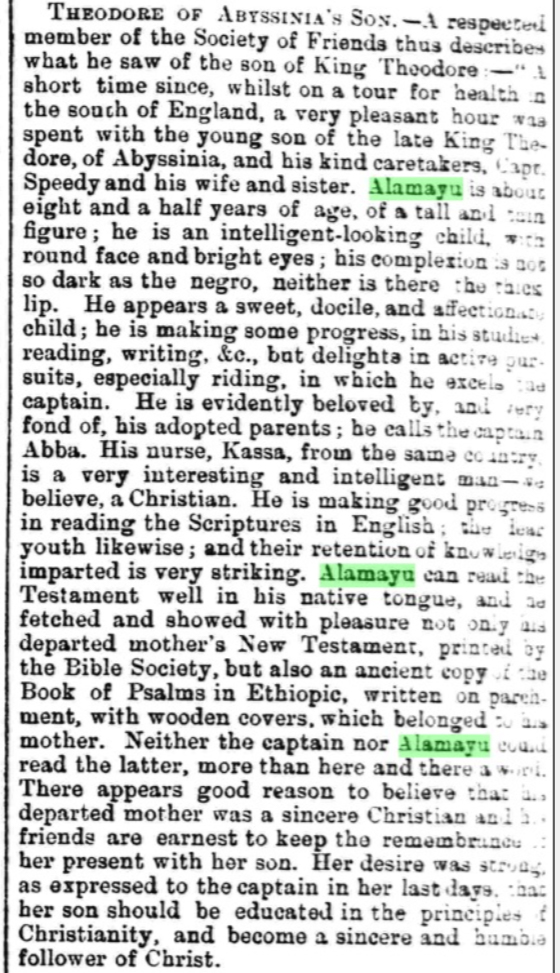What: A manuscript, probably from the 18th century, including Weddase ‘Amlak (Prayers and Petitions for Seven Days of the Week); Mahbara Me’emanan (Congregation of the Faithful) and a hymn to the Virgin Mary. Starts with an unfinished drawing of Mary and child.
Where: Bodleian Library, Broad St, Oxford OX1 3BG
A note on the first page reads: “Major General F. Roome, C.B., late Chief of the Political and Intelligence Department Senafe Abyssinia in 1868.”
MS. 83 was bought by the Bodleian in 1887, according to Edward Ullendorff’s Catalogue of Ethiopian Manuscripts in the Bodleian Library: Volume II.
His book describes 66 manuscripts in the collection. He writes: “On the whole, it is safe to assume that the majority of the MSS here described, were acquired in Ethiopia by individual members of Napier’s expedition in 1867-8. After the death of their owners many found their way to auction sales and were then purchased by the Bodleian Library.”
Rita Pankhurst’s paper The Library of Emperor Tewodros II at Mäqdäla is more conservative and lists MS 63 as one of six manuscripts in the Bodleian Library that probably came from Magdala, on top of five that were almost definitely taken from there.
She adds: “Thirty-two other manuscripts in the Bodleian could conceivably have also come from Maqdala although there is no evidence to this effect.”
Many of the Western academics who got a first look at the manuscripts were scornful.
Here is Jacob Leveen on some of the manuscripts listed in Ullendorff’s catalogue:
“Of the 66 items catalogued here, a large proportion consists of copies of those magical scrolls, which are perhaps too well represented in the libraries of Europe. They offer a melancholy spectacle of the depths of credulity and superstition to which Abyssinians sank. The hagiographical literature is no less depressing, with its exhibition of ‘Mariolatry run mad’ (as Willliam Wright so aptly called it).” [Jacob Leveen’s review of Ullendorff, E. (1951). Catalogue of Ethiopian manuscripts in the Bodleian Library: 2 7. Oxford: Clarendon Press]

